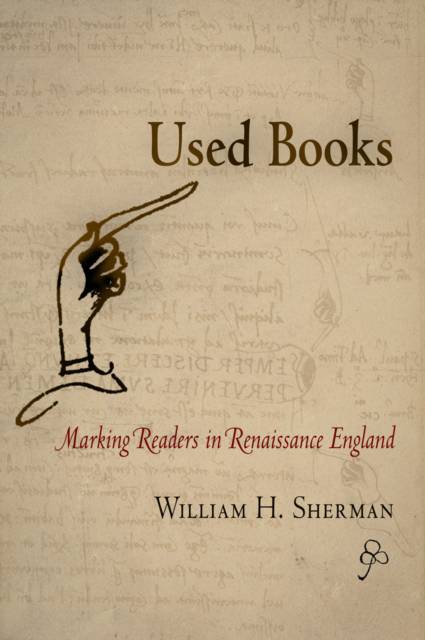
- Retrait gratuit dans votre magasin Club
- 7.000.000 titres dans notre catalogue
- Payer en toute sécurité
- Toujours un magasin près de chez vous
- Retrait gratuit dans votre magasin Club
- 7.000.0000 titres dans notre catalogue
- Payer en toute sécurité
- Toujours un magasin près de chez vous
Description
Used Books Marking Readers in Renaissance England William H. Sherman "Sherman has written an engrossing book about the traces readers leave behind: the underlining, the ticks and crosses and sketches of flowers, the cutup pages, the red-silk stitching, the heckling commentaries. . . . A generous book about marvelous particulars."--TLS "Sherman's work is indispensable, offering and demanding a complete revision of standard notions of reading in favor of a much more capacious concept of the 'use' of books before the modern era . . . . An essential book."--Stephen Orgel, Stanford University "Learned and lively. . . . The first comprehensive account of the ways of readers in the last age when books held, or seemed to hold, the answers to all of the most profound questions."--Anthony Grafton, Bookforum In a recent sale catalog, one bookseller apologized for the condition of a sixteenth-century volume as "rather soiled by use." When the book was displayed the next year, the exhibition catalogue described it as "well and piously used [with] marginal notations in an Elizabethan hand [that] bring to life an early and earnest owner"; and the book's buyer, for his part, considered it to be "enlivened by the marginal notes and comments." For this collector, as for an increasing number of cultural historians and historians of the book, a marked-up copy was more interesting than one in pristine condition. William H. Sherman's Used Books: Marking Readers in Renaissance England recovers a culture that took the phrase "mark my words" quite literally. Books from the first two centuries of printing are full of marginalia and other signs of engagement and use, such as customized bindings, traces of food and drink, penmanship exercises, and doodles. These marks offer a vast archive of information about the lives of books and their place in the lives of their readers. Based on a survey of thousands of early printed books, Used Books describes what readers wrote in and around their books and what we can learn from these marks by using the tools of archaeologists as well as historians and literary critics. The chapters address the place of book-marking in schools and churches, the use of the "manicule" (hand-with-pointing-finger symbol), the role played by women in information management, the extraordinary commonplace book used for nearly sixty years by Renaissance England's greatest lawyer-statesman, and the attitudes toward annotated books among collectors and librarians from the Middle Ages to the present. This wide-ranging, learned, and often surprising book will make the marks of Renaissance readers more visible and legible to scholars, collectors, and bibliophiles. William H. Sherman is Professor of English at the University of York. He is the author of John Dee: The Politics of Reading and Writing in the English Renaissance and coeditor of "The Tempest" and Its Travels, also available from the University of Pennsylvania Press. Material Texts 2007 280 pages 6 x 9 36 illus. ISBN 978-0-8122-4043-6 Cloth $45.00s £29.50 World Rights Cultural Studies, Literature
Spécifications
Parties prenantes
- Auteur(s) :
- Editeur:
Contenu
- Nombre de pages :
- 288
- Langue:
- Anglais
- Collection :
Caractéristiques
- EAN:
- 9780812240436
- Date de parution :
- 12-12-07
- Format:
- Livre relié
- Format numérique:
- Genaaid
- Dimensions :
- 155 mm x 231 mm
- Poids :
- 566 g

Les avis
Nous publions uniquement les avis qui respectent les conditions requises. Consultez nos conditions pour les avis.






